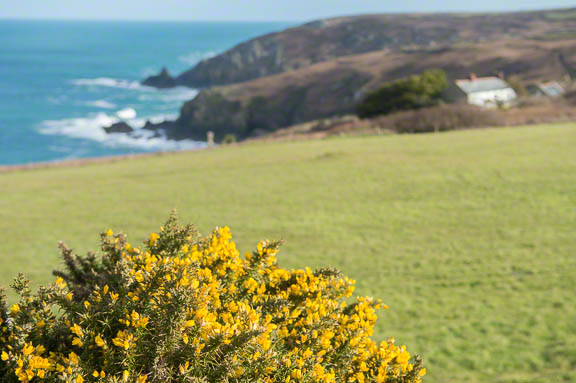I’ve been sketching on Gurnard’s Head.
We walked down to it through a farming hamlet. A cat looked at us from the top of a pile of old tyres. Black and white cattle waited in a yard. The sun shone through a cold wind. We walked over fields walled in granite, past flowering gorse.
Gurnard’s Head is a thin promentory of rock, jutting out into the Atlantic. On the sheltered eastern side its slopes are covered with short wiry grass, on the west side black rock cliffs fall vertically to the violent sea.
It’s very steep and I suffer from vertigo. Although I love this wild beautiful place I am not sure if I could live here. It is so dramatic, so elemental. I think I would find it very tiring, even though I think it is one of my favourite parts of Cornwall.
Gulls coasted on the wind, and further out we could see gannets fishing. These beautiful birds dive from great height to prey on shoals of fish. They hit the water at 60 miles an hour. As they fall they bend their wings back making a W shape, allowing them to refine their aim, and in the second before they hit the water they fold them completely, making themselves into a streamlined, blade of white. On impact they vanish below the surface and in the same instant throw up a white plume of water. It is as if the bird has been atomised. They can dive as far as 50 feet. Their eyes face forward giving them binocular vision, allowing them to judge distance. Their nostrils are inside their mouths and their chests are padded with sacs of air against impact. We lay in the grass watching the gannets work, and fell asleep in the sun.
Sadly gannets, like so many other species, are under threat from the number of humans and the amount they consume, a story which started around about the time the wheel house of this abandoned tin mine was built.
That this wild, beautiful place remains so unspoilt is almost entirely due to the National Trust. Become a member: https://join.nationaltrust.org.uk/join/start
Photographs © James Forshall







